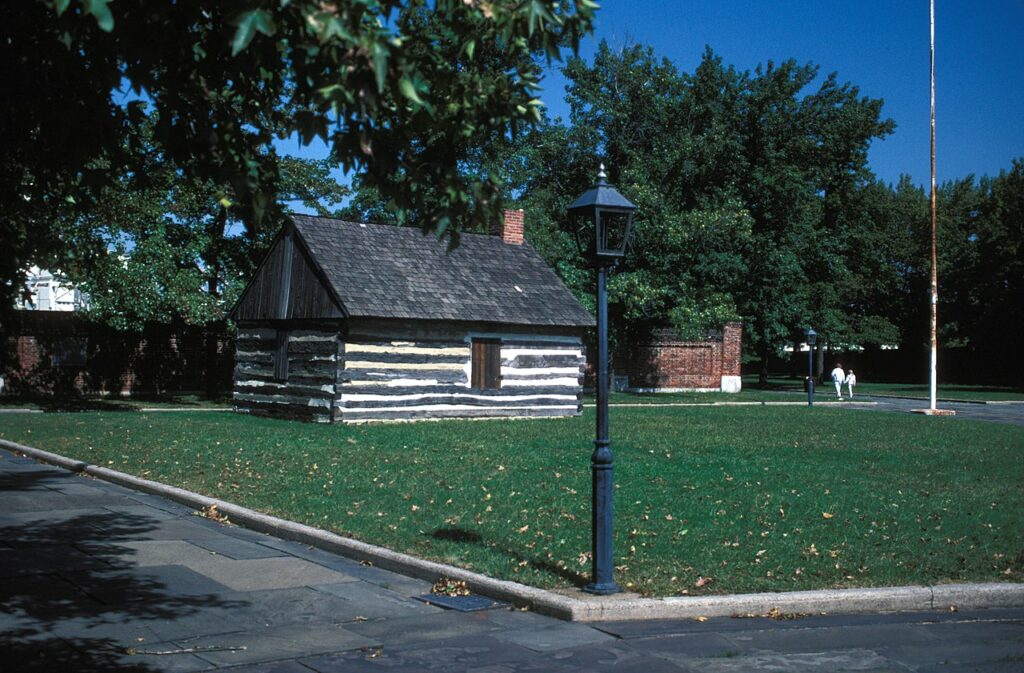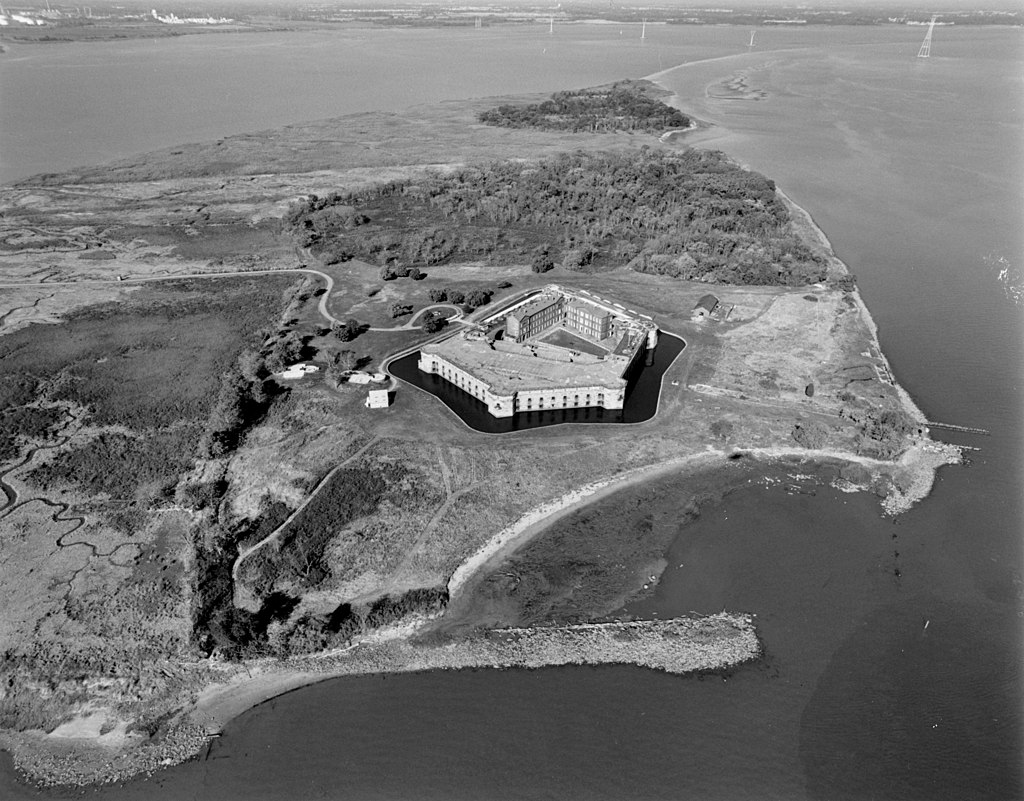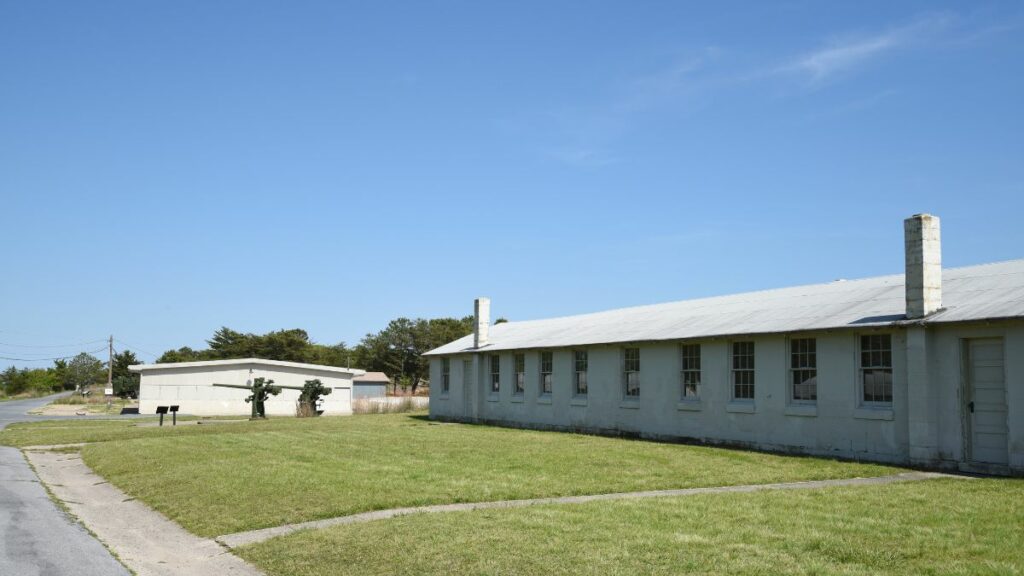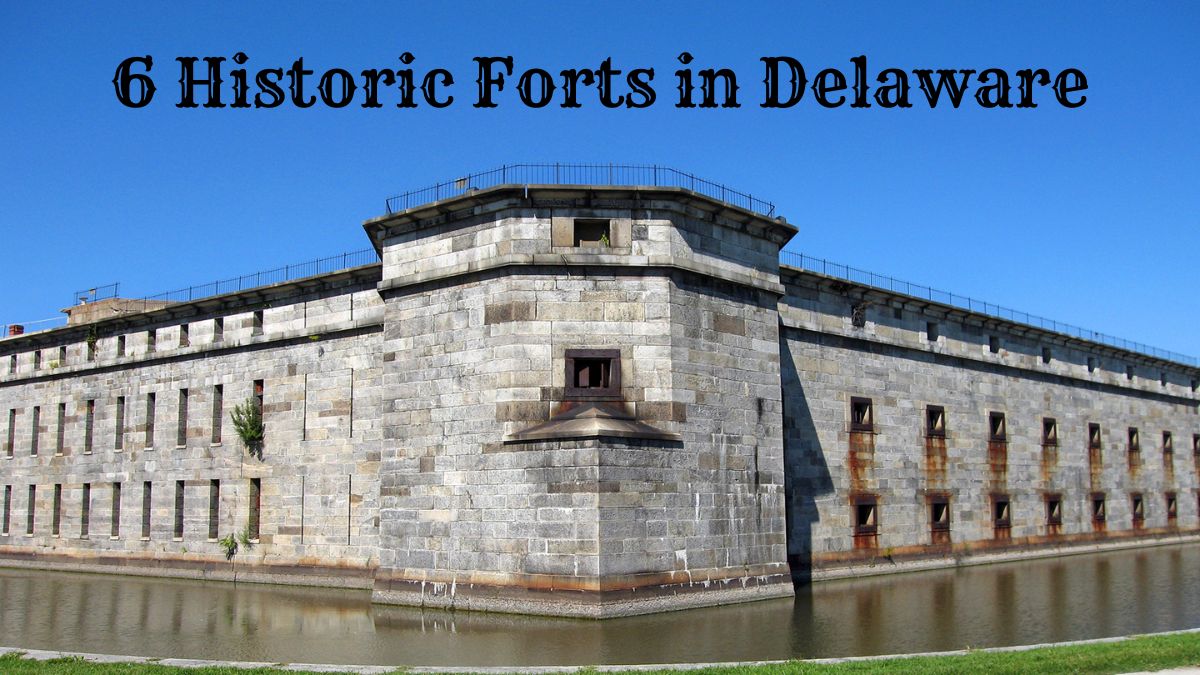With its strategic location and rich American history, Delaware is home to several historic forts that have played pivotal roles in the nation’s military past.
Each of the historic forts in Delaware have a unique story and architectural features, representing different periods in American history, from colonial times to World Wars.
They not only provide a tangible connection to significant historical events but also serve as fascinating sites for education and exploration.
Visitors to these forts can immerse themselves in the past, walking through the same grounds where soldiers once stood and experiencing the echoes of battles and strategic planning that shaped American history.
The forts are not just static monuments but dynamic educational centers, offering reenactments, tours, and interactive exhibits that bring history to life.
Historic Forts in Delaware
| 1. Fort Christina (Fort Altena) | 6. Fort Casimir |
| 2. Fort Delaware | |
| 3. Fort DuPont | |
| 4. Fort Miles | |
| 5. Fort Saulsbury |
1. Fort Christina

Fort Christina, an iconic symbol of early American history, is a testament to the complex interactions between European settlers and native populations, and the strategic geopolitical maneuvers of the colonial era.
1638, following King Gustavus Adolphus of Sweden’s vision, Swedish settlers, led by Peter Minuit, a former director of the New Netherland colony, arrived at Delaware Bay.
They selected a site along the Christina River called “The Rocks” for its trade potential and defensibility. They built Fort Christina, marking the start of the New Sweden colony.
Fort Christina, located in Wilmington, Delaware, quickly became a point of contention. Its strategic position led to heightened tensions with the Dutch, who had claims to the area, and local Native American tribes.
The fort’s earthworks, reinforced in 1640 by Governor Peter Hollander Ridder, were a response to these growing threats.
The Dutch-Swedish Conflict
The struggle for control escalated when the Dutch, led by Peter Stuyvesant, established Fort Casimir (present-day New Castle) nearby.
In 1654, under Governor Johan Rising, the Swedes captured Fort Casimir, prompting the Dutch to retaliate in 1655 with a forceful siege of Fort Christina.
After ten days, the fort surrendered, ending Sweden’s colonial presence in North America. The Dutch renamed it Fort Altena, but it notably remained a corporate struggle rather than a national conflict.
Transition to English Rule
The region, including Fort Christina, became part of English possessions after an English fleet invasion in 1664. Under English control, the original fortifications gradually fell into disrepair and disappeared.
The site was later used for new American fortifications during the Revolutionary period, and the War of 1812, with notable figures like Caesar Augustus Rodney and James A. Bayard Sr. involved in its defense.
Industrialization and Preservation
By the 19th century, the site of Fort Christina transformed with the growth of industrialization, hosting factories like the Jackson and Sharp Company.
However, in 1938, the state of Delaware, celebrating 300 years of Swedish colonization, established a park at the site.
This commemoration, attended by U.S. President Franklin D. Roosevelt and Swedish royalty, featured a monument designed by Swedish sculptor Carl Milles, highlighting the fort’s enduring legacy.
2. Fort Delaware

Fort Delaware, a significant historic site located on Pea Patch Island in the middle of the Delaware River, has a storied past that mirrors the turbulent history of the United States.
Constructed with an original plan to act as a garrison fort, Fort Delaware was transformed into a Union prison camp during the American Civil War, under the command of Capt. Augustus A. Gibson, in 1861.
The fort housed Confederate prisoners of war, convicted federal soldiers, and local political prisoners.
This transformation marked a significant shift in the fort’s purpose, from a defensive stronghold to a detention center.
Prisoner of War Camp
The fort’s conversion into a prisoner-of-war camp required substantial structural changes. Two phases of construction in 1862 and 1863 added barracks for enlisted prisoners, known as the “bullpen,” and an L-shaped barracks for Union soldiers.
A 600-bed hospital was also built to accommodate the prison population. The first Confederate general to be housed at the fort was Brig. Gen. Johnston Pettigrew, and over the course of the war, about a dozen generals were held as prisoners.
Life and Death at the Fort
Life at Fort Delaware was challenging for its inmates. The first Confederate prisoner to die there was Captain L. P. Halloway of the 27th Virginia Infantry in 1862.
By August 1863, the prison housed over 11,000 inmates, and by the war’s end, almost 33,000 men had been detained.
The prison had a mortality rate of about 7.6 percent, with many deaths resulting from diseases such as smallpox, pneumonia, and various forms of diarrhea.
Fort Delaware Today
Today, Fort Delaware is preserved as Fort Delaware State Park and is managed by the Fort Delaware Society.
The park, with its star fort design including a parade ground, officers’ quarters, and large barracks, offers a unique glimpse into its past.
Special events, ghost stories, and reenactments hosted at the park help visitors connect with the fort’s rich history, making it a vital part of Delaware’s heritage.
Many of the Confederate prisoners and Union guards who died at Fort Delaware are buried in Finn’s Point National Cemetery in Pennsville, New Jersey.
This serves as a solemn reminder of the fort’s role in one of the most defining periods of American history.
3. Fort DuPont

Fort DuPont, strategically located in Delaware City near the Wilmington ports, traces its roots back to the Civil War.
Established as a battery, it was crucial to the Union’s defensive strategy during this turbulent period in American history.
As time progressed, Fort DuPont adapted to the military’s changing needs. It played significant roles in both World Wars I and II.
During the latter, its strategic position near the ports of Wilmington made it an essential component of the coastal defense system, guarding against potential maritime threats.
Evolution Over Time
The fort’s transition from a Civil War battery to a critical point in modern warfare indicates the advancements in military technology and strategy.
This evolution highlights Fort DuPont’s adaptability and enduring relevance in the broader context of American military history.
Fort DuPont Today: A Historic Site
Now integrated into Delaware State Parks, Fort DuPont is a historical site, preserving its legacy for future generations.
Key features of the site include the remnants of battery Torbert and an original blacksmith shop, which offer insights into the fort’s operational history and significance over the years.
Today, Fort DuPont is a monument to America’s past military strategies and technologies and an educational resource.
By exploring its historical structures, visitors can gain a deeper understanding of the fort’s role in American history and the evolution of military defense over the centuries.
4. Fort Miles

Fort Miles, constructed during World War II, is situated in the picturesque setting of Cape Henlopen State Park. It was built to defend the United States, particularly its eastern seaboard, from potential enemy threats during the war.
Strategic Importance and Armaments
The fort was a critical component of the coastal defense system. It was heavily armed with large caliber weapons and rapid-fire guns, showcasing the military’s emphasis on fortifying the nation’s coasts against attacks.
The strategic location of Fort Miles, near Salem County in New Jersey, was chosen to maximize its defensive capabilities and coverage.
Fort Miles played a pivotal role in safeguarding the eastern seaboard. Its powerful armaments and strategic positioning were essential in deterring and preparing for potential enemy attacks when the threat to the American coast was a significant concern.
Notable events, including preparations for enemy attacks and the surrender of German submarines, mark the history of Fort Miles.
These historical moments add to the fort’s allure for those interested in military history, offering a direct connection to significant wartime events.
Fort Miles Today: A Destination for History Enthusiasts
Today, Fort Miles is integral to Cape Henlopen State Park, inviting visitors to explore its rich military history.
The stories of its past, from its role in coastal defense to specific wartime incidents, make it a captivating destination for anyone interested in the complexities and realities of military strategy during World War II.
5. Fort Saulsbury
Fort Saulsbury, erected in 1924, was initially a response to the global upheaval of World War I. It was constructed in an era marked by the need for heightened military readiness and defense capabilities.
The fort’s most significant role came during World War II. It was a heavy artillery battery, a critical component of the nation’s defense strategy.
Fort Saulsbury was used as a POW camp, reflecting the diverse and multifaceted nature of its military use during this period.
Preservation and Uniqueness
What sets Fort Saulsbury apart is its state of preservation and its status outside of a more extensive park system.
This unique aspect offers visitors a rare and undiluted glimpse into 20th-century military fortifications, providing an authentic experience of the era’s military architecture and infrastructure.
As a historical site, Fort Saulsbury provides invaluable insights into the military and political landscapes of the early to mid-20th century.
Its preservation allows for a deeper understanding of the strategies, technologies, and structures used in national defense during a critical period in world history.
6. Fort Casimir
Fort Casimir, an essential part of America’s colonial history, was established in the 17th century. Its founding was a significant event, marking a period of European colonization and territorial competition in North America.
Located strategically, Fort Casimir played a crucial role in the colonial power struggles of the era. It was a focal point for the contesting European powers, reflecting the broader geopolitical dynamics of the time.
The fort’s position was vital in controlling access to important trade routes and regional influence.
Fort Casimir holds a special place in the history of early America. It is a testament to the complex interactions between different colonial powers and the indigenous populations.
The fort’s history offers insights into the early colonial strategies, trade practices, and cultural exchanges that shaped the region’s development.
Preservation and Educational Value
As a historical site, Fort Casimir serves as a valuable educational resource. It allows for exploring the early stages of European settlement in North America, providing a tangible link to the past.
The preservation of such sites is crucial for understanding the historical context of early American history.
Related: 10 Historic Forts in Georgia
The Enduring Legacy of Delaware’s Historic Forts
Delaware’s historic forts, each embodying a unique chapter in American history, stand as enduring testaments to the state’s significant past.
From the initial construction of Fort Delaware, a monumental effort that transformed Pea Patch Island, to the pivotal roles played by these strongholds during various Civil War periods, these sites capture the essence of Delaware’s military and political journey.
Beyond their historical architecture, these forts are vibrant centers for learning and exploration. They connect us directly to the past, offering insights into Confederate soldiers’ lives, federal troops’ strategies, and the complexities of war.
The detailed official records and stories preserved at these sites provide further information and a deeper understanding of the sacrifices and challenges of those tumultuous times.
Today, these historic sites serve a dual purpose. They are not only guardians of Delaware’s rich heritage but also educational platforms that bring history to life.
Through interactive tours and reenactments, visitors can delve into the experiences of different eras, from the strategic planning and construction of Fort Delaware to the daily lives of soldiers and commanders.
In preserving these forts, Delaware honors its history and ensures that the invaluable lessons of the past remain alive for future generations.
These sites, representing a significant era in the broader narrative of Delaware and the United States, continue to be sources of fascination, education, and inspiration.
They are, without a doubt, crucial elements of American heritage, offering a window into the past and guiding lights for understanding our present and future.

Cory is a website owner and content creator who enjoys fishing, history, coin collecting, and sports, among other hobbies. He is a husband and father of four.
Romans 15:4 For whatever was written in former days was written for our instruction, that through endurance and through the encouragement of the Scriptures we might have hope.

